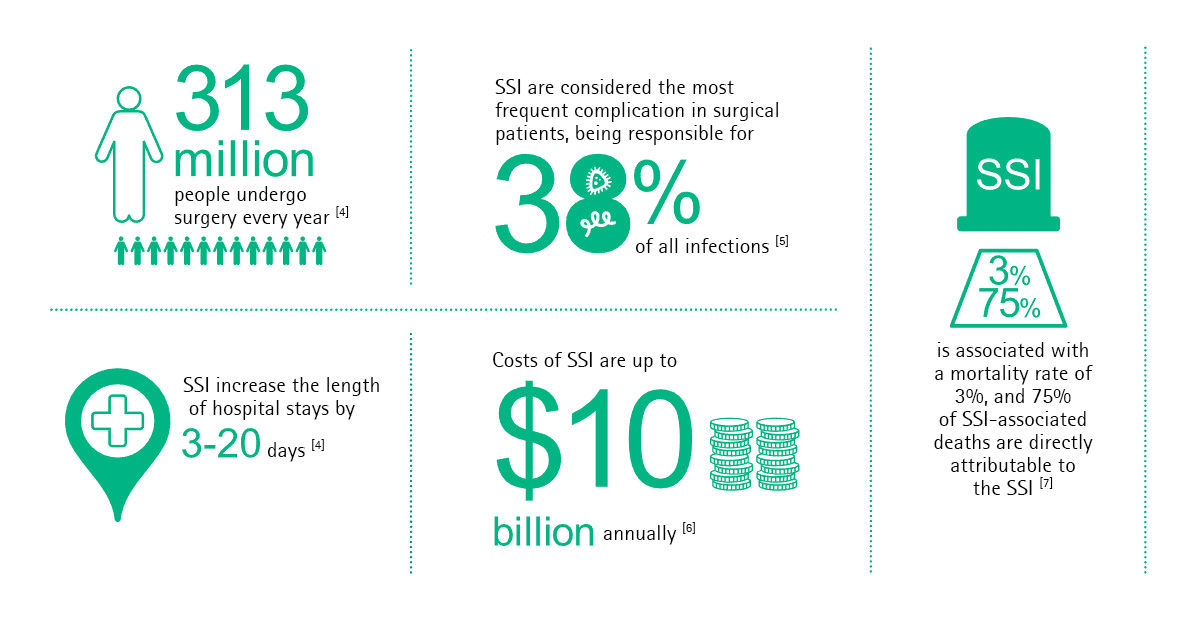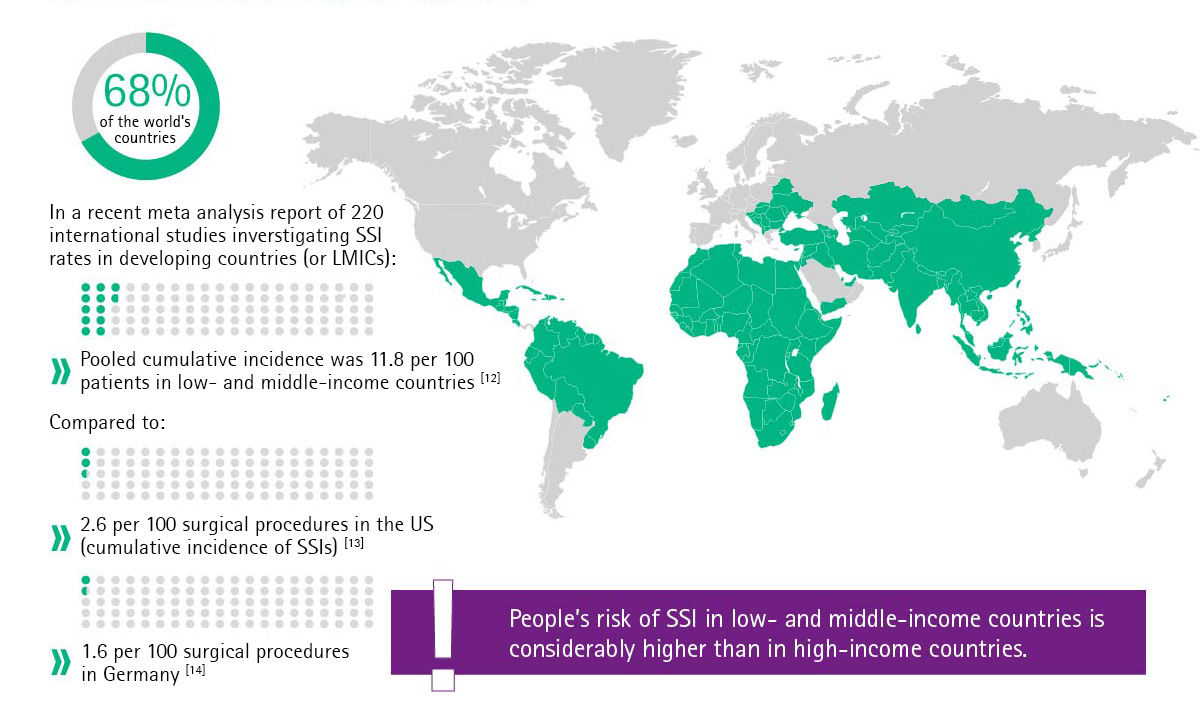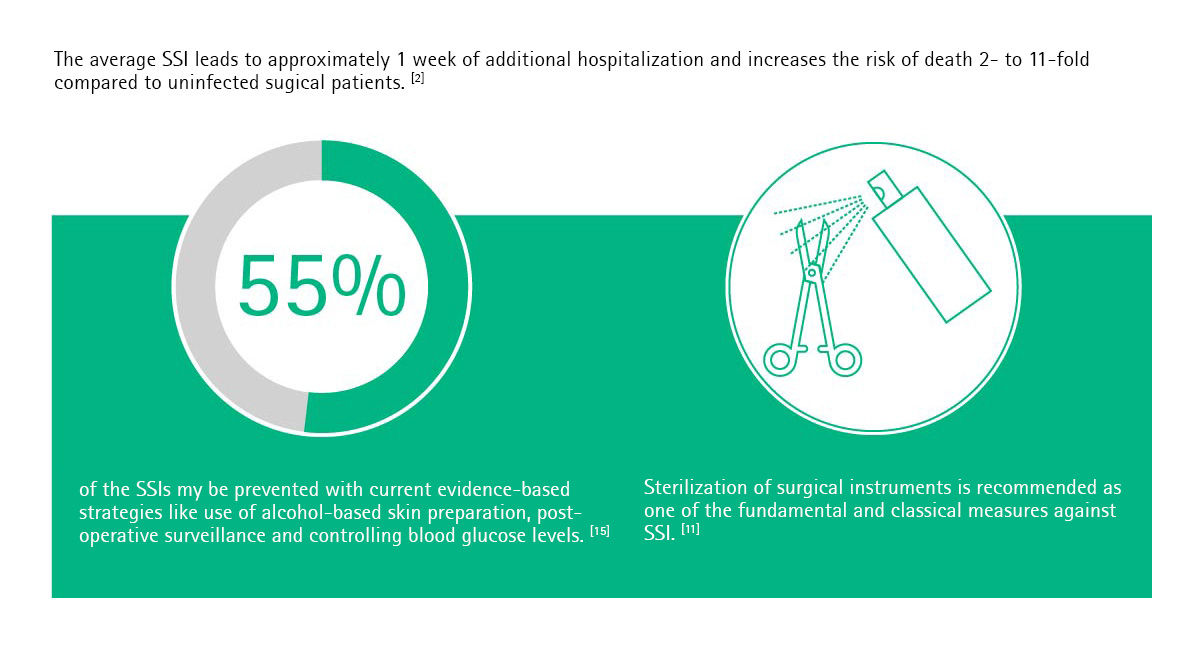No content results match your keyword.
Content
You have successfully logged out.
Not registered yet?
No content results match your keyword.
Content
No product results match your keyword.
Products
Infection Prevention CSSD
Surgical site infection (SSI) is the most frequent type of health care-associated infection (HAI) in low- and middle-income countries, LMICs, [1] (68% of the world‘s countries [2]). According to WHO reports, approximately 1 in 10 people who have surgery in LMICs acquire SSIs. In addition to the risk and discomfort for the patient, SSIs dramatically increase the direct and indirect cost of treatment and reduce health-related quality of life. [3]

SSI rates
0%
higher!
Surgical instruments could act as fomites for the pathogens of surgical site infection even if the surgical field is not evidently contaminated. [11]

More information about how you can optimize your CSSD/SPD workflow processes via digitalization and the first voices of users by downloading this whitepaper.
Register now to access white paper download
Health care-associated infections (HAIs), especially surgical site infections (SSIs) ...
Read moreThe CSSD plays a vital role in patient safety and in reducing hospital surgical infection ...
Read more[1] WHO Protocol for surgical site infection surveillance with a focus on settings with limited resources, 2018.
[2] Rosenthal VD, Richtmann R, Singh S, Apisarnthanarak A, Kübler A, Viet-Hung N et al. Surgical Site Infections, International Nosocomial Infection Control Consortium Report, Data Summary of 30 Countries, 2005–2010. Infect Control Hosp Epidemiol. 2013 Jun;34(6):597-604.
[3] Umscheid CA, Mitchell MD, Doshi JA, Agarwal R, Williams K, Brennan PJ. Infect Control Hosp Epidemiol. Estimating the proportion of healthcare-associated infections that are reasonably preventable and the related mortality and costs. 2011 Feb;32(2):101-14. doi:10.1086/657912.
[4] WHO. Hand Hygiene and the Surgical Patient Journey. (accessed Aug. 2016).
[5] B. Braun. Surgical Site Infections – Risk Prevention by Surgical Gloving. (accessed Aug. 2016).
[6] Centers for Disease Control and Prevention. (CDC). Surgical Site Infection (SSI) Toolkit. (accessed Aug. 2016).
[7] Centers for Disease Control and Prevention. (CDC). (accessed Nov. 5, 2015).
[8] Portillo-Gallo JH, Miranda-Novales MG, Rosenthal VD, Sánchez M, Ayala-Gaytan JJ, Ortiz-Juárez VR et al. Surgical site infection rates in four Mexican cities: Findings of the International Nosocomial Infection Control Consortium (INICC). J Infect Public Health. 2014 Nov-Dec;7(6):465-71.
[9] Charry L, Andrade PC, Cabra H. Systematic Review of Clinical and Economic Outcomes Related to Surgical Site Infections in Latin America. Value in Health 2016 Nov;19(3), A223.
[10] WHO Health care-associated infections FACT SHEET
[11] Saito Y, Kobayashi H, Uetera Y, Yasuhara H, Kajiura T, Okubo T. Microbial contamination of surgical instruments used for laparotomy. American Journal of Infection Control, Volume 42, Issue 1, 43-47.
[12] Allegranzi B Bagheri Nejad S, Combescure C, Graafmans W, Attar H, Donaldson L et al. Burden of endemic health-care-associated infection in developing countries: systematic review and meta analysis. Lancet. 2011 Jan 15;377(9761):228-41.
[13] Gaynes RP, Culver DH, Horan TC, Edwards JR, Richards C, et al. (2001) Surgical site infection (SSI) rates in the United States, 1992–1998: the National Nosocomial Infections Surveillance System basic SSI risk index. Clin Infect Dis 33: 69-77.
[14] Gastmeier P, Geffers C, Brandt C, Zuschneid I, Sohr D, et al. (2006) Effectiveness of a nationwide nosocomial infection surveillance system for reducing nosocomial infections. J Hosp Infect 64: 16-22.
[15] Conway LJ1, Pogorzelska M, Larson EL, Stone PW. Surgical Site Infection Prevention Policies and Adherence in California Hospitals, 2010. Infect Control Hosp Epidemiol. 2012 Jun; 33(6): 640-1.
Your feedback matters! Participate in our customer survey to help us enhance our website, products and services. Thank you for your support!